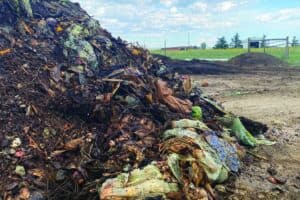Dan and Stacy Kibler bought their property next to Drake Lake in Falcon more than a year ago. Since then, Dan Kibler said the evergreen trees that border Mallard Drive along his front property line have been dying in sequence.Stacy Kibler said the couple initially thought they had a pest problem. They called Front Range Arborists Inc. and scheduled the company to come out and spray the Ponderosa and PiÒon pines to get rid of whatever was killing the trees, Kibler said.Front Range Arborists completed the work in September, but the treatment did not work, she said. After they told the company the treatment was ineffective, Front Range Arborists came out a second time to inspect the trees, she said.According to a letter from Front Range Arborists to Dan Kibler dated Oct. 27, 2015, Tom Flynn, senior arborist, stated he saw no signs of pest issues and believed the problem was man-made. ìAll I can think of is that it may have something to do with the application to the road to keep the dust down,î the letter states. ìStudies show that magnesium chloride is very damaging to Pines and can cause death, the trees suffering are in lower areas that an over-application or run off would get to root zone.îDan Kibler said he called another company, Tall Timber Tree and Shrub Services, to have them inspect the trees. According to the work order Kibler received from them, ìTrees are dying from contaminant damage. Suspect mag(nesium) chloride or similar product.îMallard Drive is a gravel road maintained by El Paso County, and the county has made deep cuts in the ditches along the sides of the road, from the beginning of Mallard Drive at Blue Gill Drive to just past Drake Lake, Kibler said. ìIt is funneling all the water from about 100 acres across the street right onto my property, along with the magnesium chloride,î he said.In certain areas along his property line, water pools when it rains, he said. The trees in those areas were the first ones to die, and the rest are dying as you get farther away from those low areas, Kibler said.Dave Rose, public information officer with EPC, said the county uses magnesium chloride for dust control but in a pretty diluted portion, and the areas treated each year are minimal.ìWe put down about one-half-gallon-per-square-yard of magnesium chloride, mixed with 30,000 gallons of water,î Rose said. ìThe water is applied first and the magnesium chloride is done second.îThe section of road in front of Kiblerís property was treated in June 2015, and the magnesium chloride was probably all washed away in the big July 9 rainstorm, Rose said. However, Kibler said he thinks rainstorms like that, coupled with the ditches flowing water onto his property where it pooled, caused the ground to absorb the chemicals, which killed the trees.ìOur guys working out there say the culvert in his (Kiblerís) driveway would not handle even a non-consequential rain event,î Rose said. ìThey think his ditch is not operating properly. They said his culvert is undersized, and it is plugged.îIf the culvert was working properly, the water would not pool anywhere on Kiblerís property; instead, it would follow the ditch and flow past his property toward Drake Lake, Rose said. ìRight there in that area of Drake Lake is a wetland, which would have the tendency to dilute the magnesium chloride even further,î he said.Additionally, Rose said there have been no conclusive studies on magnesium chloride that indicate it is the definitive cause of issues like Kibler has presented.ìI have tried telling the people at the county what it is doing to my trees, and they keep telling me it is not, and there is nothing they can do,î Kibler said. ìBut I have pictures of my trees that look exactly like all the pictures online if you search for ëdead trees from chloride.íîEditorís note: The NFH will follow up in February with this situation.






